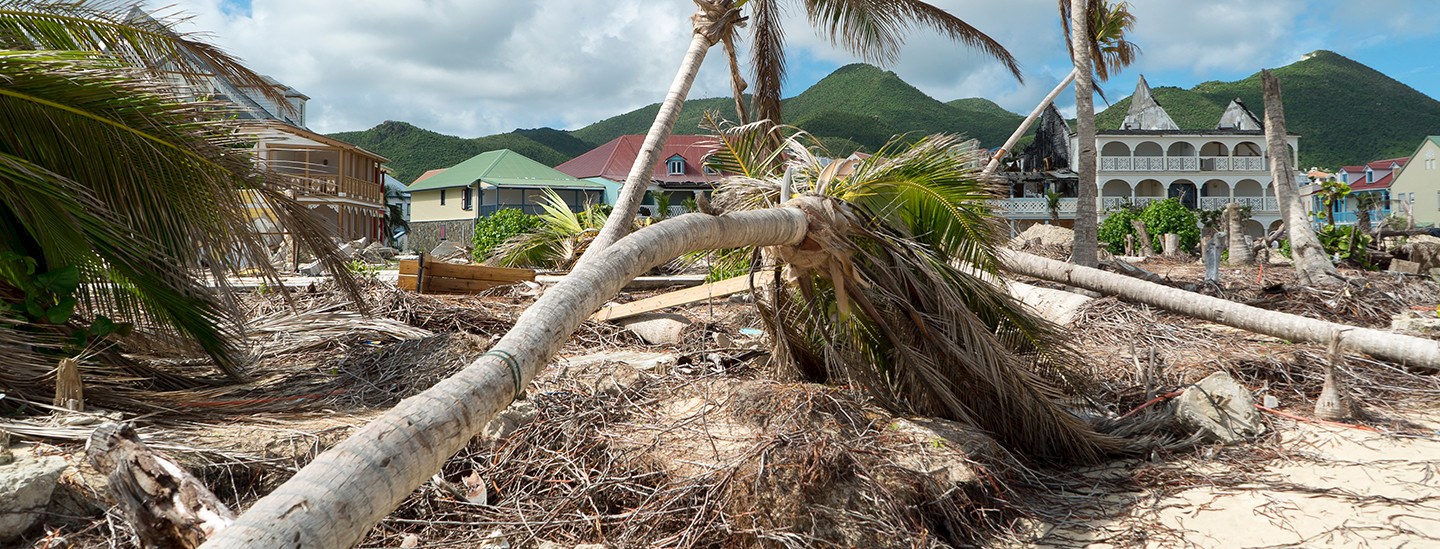
Hurricane Preparedness
Guidance for before, during and after a hurricane for your business and home
Hurricane Claims Contacts
Commercial Resources
for Businesses
Claims Resources for Home
& Property
Hurricanes vs. Tropical Storms and Depressions
The National Weather Service rates hurricanes by their sustained wind speed using the Saffir-Simpson Hurricane Wind Scale of 1—5. This scale was developed in the 1970s to help scientists communicate storm risk more effectively to the public. You should, however, not ignore the risks of any oncoming storm, regardless of category. The simplified scale, somewhat controversially, only considers wind speed, not other damaging and deadly threats like storm surge, rainfall rates and tornadoes. Just because a storm is slow moving, does not mean it won't cause significant damage.
Saffir-Simpson Hurricane Wind Scale
| Wind Speeds | ||
| Category | MPH | Knots |
| 5 | >156 | >135 |
| 4 | 131-155 | 114-134 |
| 3 | 111-130 | 96-113 |
| 2 | 96-110 | 94-95 |
| 1 | 74-95 | 65-83 |
| Tropical Storms | 39-74 | 34-64 |
| Tropical Depression | 0-38 | 0-33 |
Storm Definitions
Understand the different types of rain storms to prepare your business and home.
Tropical Depression
An organized system of clouds and thunderstorms with a defined surface circulation and maximum sustained winds of 38 MPH (33 knots) or less. Sustained winds are defined as one-minute average winds measured at about 33 feet (10 meters) above the surface.
Tropical Storm
An organized system of strong thunderstorms with a defined surface circulation and maximum sustained winds of 39— 73 MPH (34—63 knots).
Hurricane
An intense tropical weather system of strong thunderstorms with a well-defined surface circulation and maximum sustained winds of 74 MPH (64 knots) or higher.
Storm Surge
A dome of water pushed onshore by hurricane and tropical storm winds. Storm surges can reach 25 feet high and be 50—1000 miles wide. A storm surge is by far the greatest threat to life and property along the immediate coast.
Storm Tide
A combination of a storm surge and the normal tide (i.e., a 15-foot storm surge combined with a 2-foot normal high tide over the mean sea level would create a 17-foot storm tide).
Hurricane/Tropical Storm Watch
Hurricane/tropical storm conditions are possible in the specified area of the watch, usually within 48 hours. Tune in to NOAA Weather Radio, commercial radio or television for information.
Hurricane/Tropical Storm Warning
Hurricane/tropical storm conditions are expected in the specified area of the warning, usually within 36 hours of the onset of tropical storm force winds. Complete storm preparations and immediately leave the threatened area if directed to do so by local officials.
Extreme Wind Warning
Extreme sustained winds of a major hurricane (115 MPH or greater), usually associated with the eye wall, are expected to begin within an hour. Take immediate shelter in the interior portion of a well-built structure.
Short-Term Watches and Warnings
These warnings provide detailed information about specific hurricane threats, such as flash floods and tornadoes.
Essential Resources for Hurricane Preparedness
Below are recommended resources for you to bookmark to help prepare and recover from a hurricane. These are national resources and are not associated with Gallagher.

